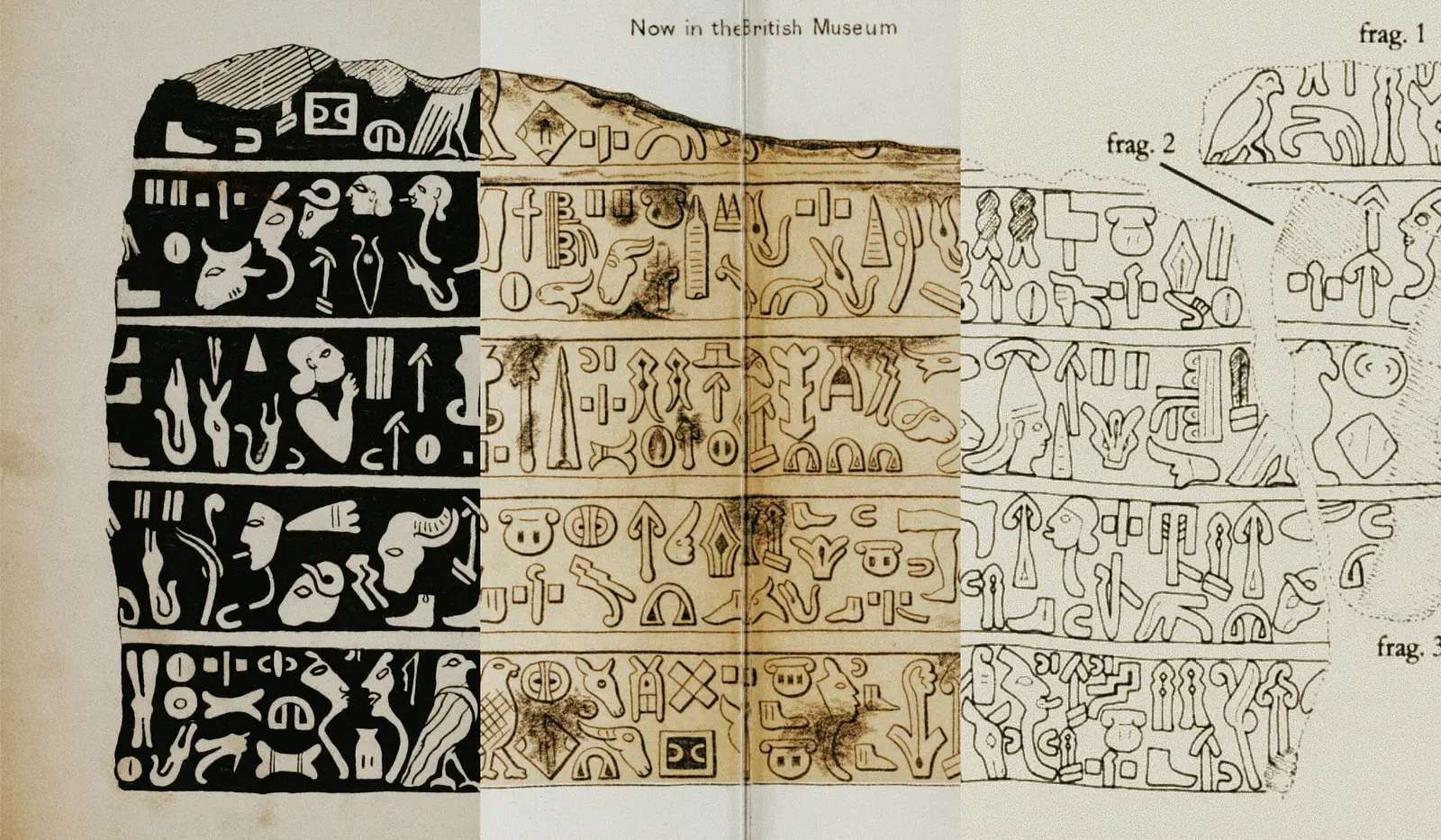Anatolian Hieroglyphs, formerly known as Hittite Hieroglyphs, have been studied since the 19th century. Close proximity to the birthplace of the alphabet and coexistence in the same region for a time enhances their significance in the evolution of letters. Although it is characterised by pictographic signs, as its name suggests, it is a hybrid writing system that also includes phonetic signs contrary to the definition of hieroglyphs. Some signs have both word and syllable value. Some of the signs act as determinants of other signs.
The multidisciplinary nature of ancient script studies has expanded to include digital font standards and endpoint technologies. As a result, we can now discuss about a phenomenon called Anatolian Hieroglyphs fonts. As we prepare to unveil our work on Anatolian Hieroglyphs, we thought it would be useful to share the resources we used during the research in one place. We also continue to add the books and articles we used to our bibliography page.
Here is the part about the history of the drawings that have served as a mediator in the digitization of the Anatolian hieroglyphs, and the fonts:
Drawings
Drawings of Anatolian Hieroglyphs first appeared in the publications of travellers who chronicled their travels in Asia Minor and the Middle East. These publications were intended to introduce the script before decipherment and to provide information about the exotic geographies of the time. It is clear from these books that the script was initially confused with Egyptian Hieroglyphs, and was sometimes referred to as Altai Hieroglyphs, etc.
The first structurally meaningful examples of hieroglyphic Luwian writing, now known as Anatolian Hieroglyphs, emerged after European linguists stepped in and named it Hittite Hieroglyphs. The publications representing this phase have sign shapes and character drawings of a quality comparable to today’s publications.
- A. Henry Sayce, The Monuments of the Hittites, 1881
- William Wright, The Empire of the Hittites, 1886
- Felix Ernst Peiser, Die Hetitischen Inschriften, 1892
- Leopold Messerschmidt, Corpus Inscriptionum Hettiticarum, 1900
- R. Campbell Thompson, A new decipherment of the Hittite hieroglyphics, 1913
- Arthur Ernest Cowley, The Hittites, 1926
- Ignace J. Gelb, Hittite Hieroglyphs, 1931
- Bedřich Hrozný, Les inscriptions hittites hiéroglyphiques, 1933
- C. Leonard Woolley, Carchemish, 1969
Journals
- Friedrich, Güterbock, Hawkins, Laroche, Meriggi et al, Revue Hittite et Asianique (1930–1971)
- Alkım, Alp, Bossert, Çambel, Güterbock, Özgüç et al, Belleten (1947–1966)
All the links above lead to digital copies of the original documents. Some data in publications may not be entirely accurate. For more information on the specific publications, please see our Bibliography page.
Other significant works that can be considered the primary reference for the study of Anatolian Hieroglyphs are as follows:
- Emmanuel Laroche, 1960
- Piero Meriggi, 1966, 1967
- Emilia Masson, 1979
- Massimiliano Marazzi, 1990, 1998
- J. David Hawkins, Halet Çambel, 1999
- J. David Hawkins, 2000
- Annick Payne, 2014
Anatolian Hieroglyphs were included in Unicode in 2015, version 8.0. It is available in the Supplementary Multilingual Plane block. See Unicode Consortium Anatolian Hieroglyphs code chart for the range of 14400–1467F (PDF)
Fonts
Luwhitt (2004)
Luwhitt A and Luwhitt B (Non-Unicode) fonts by Gunter Anders
Luwian hieroglyphic fonts for Macintosh and Windows.
Michael Everson’s fonts (2006)
Computerized fonts for the Unicode standard documentation by Michael Everson. Some of the glyphs on initial versions have been designed by Gunter Anders.
Aegean (2007–2012)
George Douros, Unicode Fonts for Ancient Scripts project
Contexts of and Relations between Early Writing Systems (CREWS), Typeface Resources.
Anatolian (2014)
George Douros, Unicode Fonts for Ancient Scripts project.
Noto Sans Anatolian Hieroglyphs (2017)
Noto Sans Anatolian Hieroglyphs by Monotype design team for Google, Google Fonts.
EDIT: In July 2024, we proudly released our own contribution, Anatolithic.
If you believe there is something missing from the list, please let us know.

